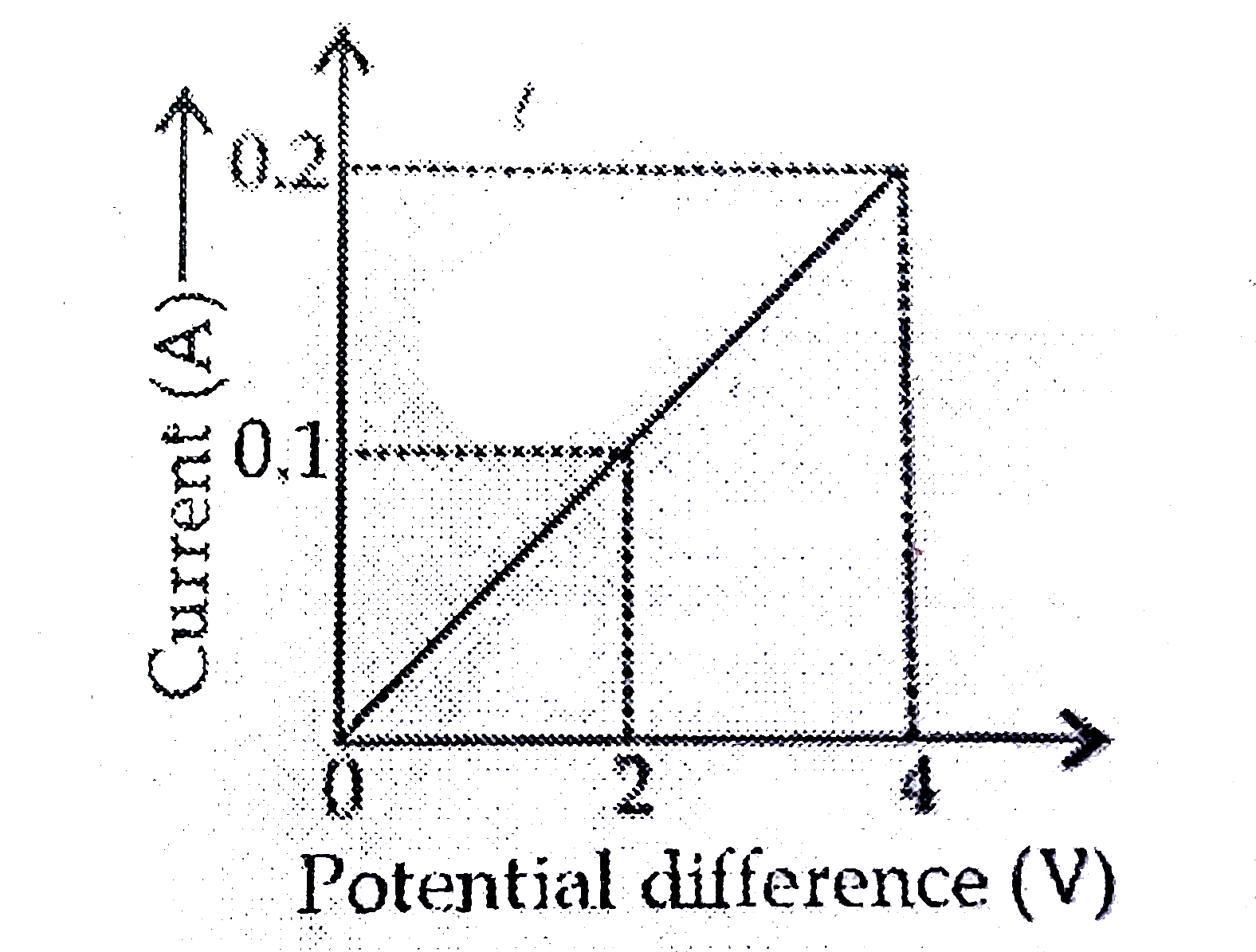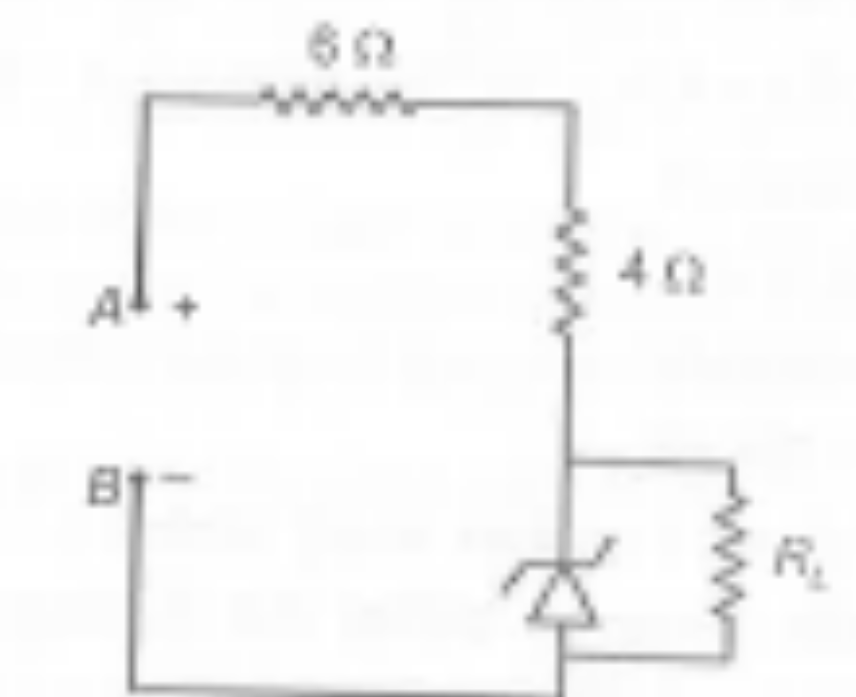(a) Calculate the resistance of the wire using the graph.

(b) How many 176Ω resistors in parallel are required to carry 5A on a 220 V line?
(c ) Define electric power. Derive relation between power, potential difference and resistance.
(a) Resistance of wire = Slope of the graph
According of Ohm's law,
V=IRorR=VI
∴R=V2−V1I2−I1=4−20.2−0.1=2×101=20Ω
(b) Resistance, R'=176Ω No of resistors=n, Current,I=5A
Potential difference, V=220 volts, Resultant resistance =R
According to Ohm's law,
V=IR R=VI=2205=44Ω
1R=(1R'+1R'+...n times)=1+1+1+...n timesR'
1R=nR'⇒n=R'R=17644=4
Thus 4 resistors of 176 Ω in parallel combination are required to carry 5A on a 220 V line.
(c ) Electric power is defined as the electrical work done per unit -time.
Power=Work doneTime taken⇒P=Wt
The work done, W by current, I when it flows for time t under potential difference V is given by, W=V×I×t joules
∵P=WT ∴P=V×I×tt ∴P=V×I
But I=VR
So, P=V×VR⇒P=V2R
Electric power =(Potential difference)2Resistance
Similar Questions
How many 176Ω resistors (in parallel) are required to carry 5 A in 220 V line ?
View SolutionWrite the relation between electric power of a devices with potential difference across its two ends and its resistance .
View SolutionState a relationship between electrical power, resistance and potential. difference in an electrical circuit.
View SolutionIf the voltage between terminals A and B is 20 V and Zener breakdown voltage is 7 V then the potential difference across 6Ω resistance is

View SolutionCalculate the current flowing through a wire of resistance 5 Ω connected to a battery of potential difference 3 V.
View SolutionDraw a circuit diagram of an electric circuit containing a cell, a key, an ammeter, a resistance of 2Ω in series with a combination of two resistors (4Ω each) in parallel and a voltmeter across the parallel combination. Will the potential difference across the 2Ω resistor be the same as that across the parallel combination of 4Ω resistors ? Give reason.
View SolutionAn electric bulb of resistance 500Ω, draws a current of 0.4 A. Calculate the power of the bulb and the potential difference at its end.
View SolutionCalculate the current flowing through a wire of resistance 7.5 Ω connected to a battery of potential difference 1.5. V.
View SolutionCalculate the amount of charge flowing in 2 minutes in a wire of resistance 10Ω when a potential difference of 20 V is applied between its ends
View SolutionThe values of current (I) flowng through a given resistor of resistance (R ), for the corresponding values of potential difference (V) across the resistor are as given below :

Plot a graph between current (I) and potential difference (V) and determine the resistance (R ) of the resistor.
View Solution
